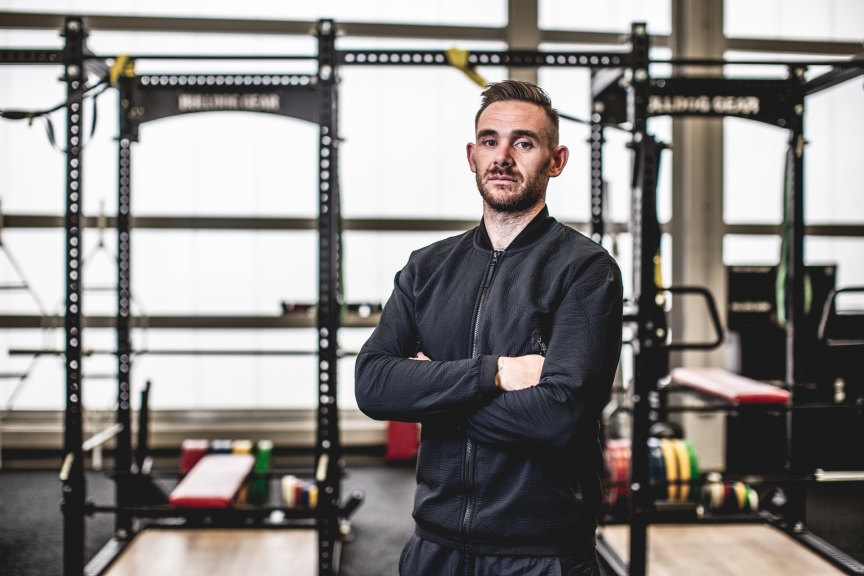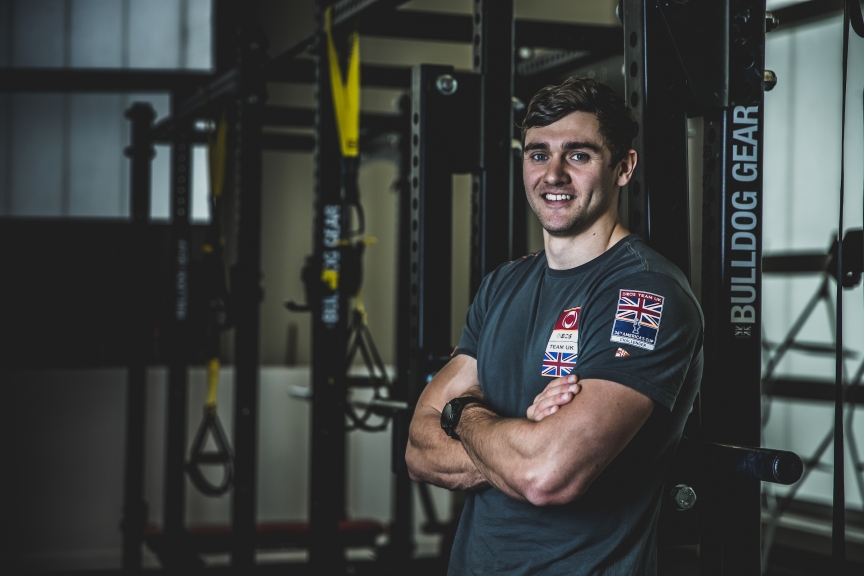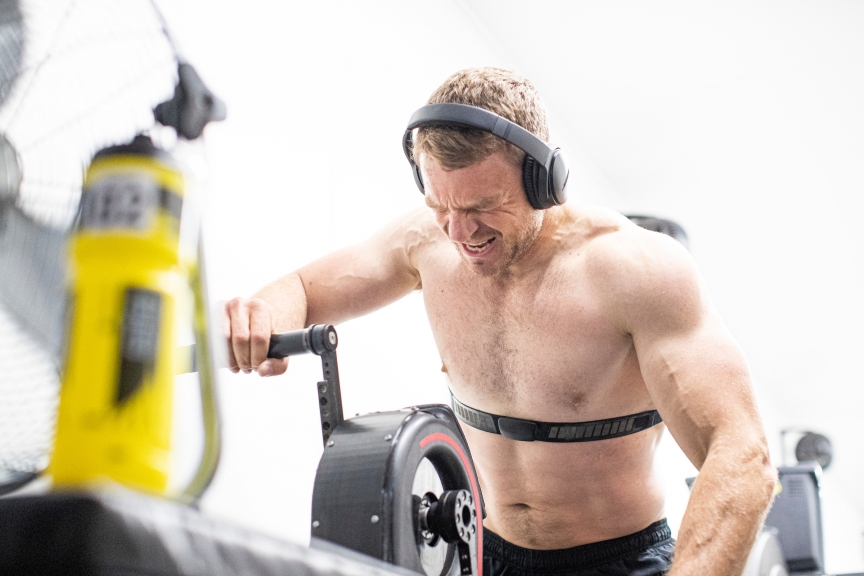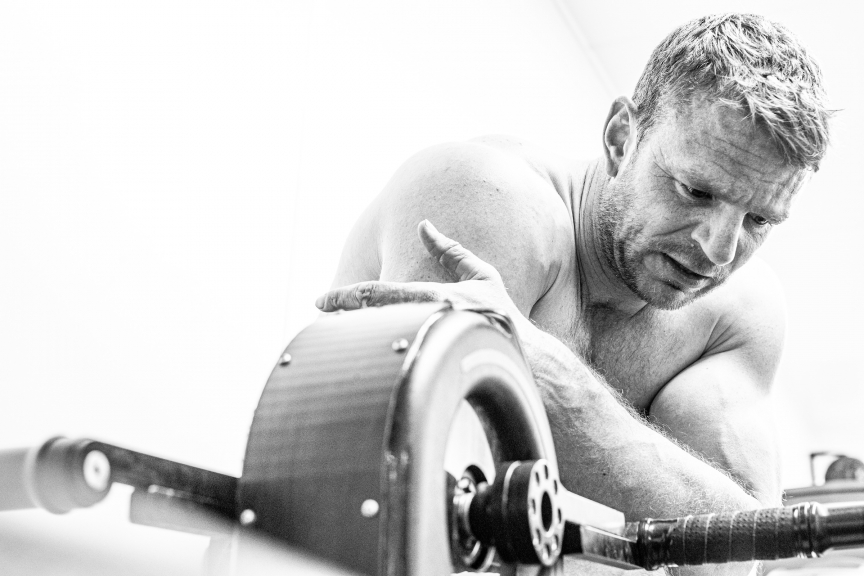Maintaining muscle mass & strength with INEOS TEAM UK
Being confined to home means that many people might no longer be able to do their usual weight training and might be concerned that they will lose muscle mass and strength. Regular physical activity and appropriate nutrition are key to maintaining healthy, strong muscles. You don’t necessarily need heavy weights to build muscle mass.
For example, lifting a lighter load (30-50% of maximum) can lead to similar improvements in muscle mass and strength compared with lifting a heavy weight (75-90% of maximum). The key is to perform these tasks to failure. For example, body weight exercises like press-ups, sit ups, burpees and pull-ups can be used, and to maximise the muscle response, ensure you complete as many repetitions as you can (until you can do no more repetitions of that exercise).
INEOS TEAM UK has spoken with our team’s Head of Human Performance Ben Williams on the importance of maintaining muscle mass and strength for the team, and how Ben and the Performance team helped our sailors do just that whilst in lockdown.
Hi Ben, to kick off our new series we are taking a look at maintaining muscle mass and strength. Firstly, why is that important for a sailing team?
Ben Williams: Maintaining muscle mass and building strength and power is hugely important for us. We are in a situation where our boat can absorb pretty much any amount of power that we put into it. So, unlike for example with cycling, our goal is not to generate a specific set of watts per kilo. Instead our goal is simply to maximise the amount of power and torque we can input into the boat to optimise performance potential. It’s a never-ending challenge really.
We break it down into two parts. The first part is all about generating the strength to be able to conduct the grinding itself. We need to ensure our athletes are able to push the gearing and torque required by the boat to deliver the power. The second part is all about ensuring our sailors have the structural integrity to absorb the amount of load they undertake in powering the boat.

© HARRY KH
Tell me about that first part – how do you ensure the sailors maintain and build enough muscle mass to be able to generate the amount of power required?
Developing and maintaining strength qualities is a product of many variables such as nutrition, programming, recovery and more.
To maintain muscle mass and recover from training we need to ensure our protein intakes are adequate for the amount of training we ask the sailors to do. That will vary specific to each sailor. As you can imagine, the protein needs for a 120KG sailor and a 90KG sailor are very different even if they are doing similar training volume. This is where we work closely with our nutrition partners KX and their lead nutritionist Aidan Goggins to ensure that all the athletes’ intake programmes are tailored to the needs and requirements of each individual athlete.
Then it’s essential we create consistency in our strength training programmes. Being professional athletes, it was paramount for us to ensure that, where possible, they had access to training equipment during this lockdown period. We then came up with a series of strength and endurance based programmes to enable them to continue to undertake their training at home. Where it was more difficult to arrange equipment, we created a series of equipment-free programmes such as TRX workout builders or bodyweight volume strength workouts. These were developed by our Strength & Conditioning coach Ben Pink so that our sailors can continue to do two or three strength sessions a week on top of their cardiovascular grinding loading.

© HARRY KH
What about the second part – ensuring the sailors have the structural integrity to absorb the amount of power they do. What does that entail?
Our sailors will be expected to absorb over four million of revolutions per year on the grinding machines. That’s a lot of load, torque and pressure on the joints involved. One of our jobs is to ensure that our sailors can train and sail without getting injured from the total load.
A lot of that is pre-emptive work. We screen all our sailors at intervals throughout the year to understand their injury risk profile. Fortunately, we were just able to get the majority of our team through a screening process just before the lockdown. This screening allows us to develop pre-habilitation programmes for each athlete as an extra add-on to their training to keep their shoulders healthy. Essentially we are trying to reduce the injury risk for the muscles that articulate and stabilise the shoulder and enable athlete availability.

© Lloyd Images / Mark Lloyd
During the last period of lockdown how did you deliver these bespoke training programmes to our sailors?
All our athletes were training remotely. They all had their own individual set-ups with varying levels of equipment. Some had full training set-ups with weights and Olympic lifting racks, others worked with home-made cables and TRXs. We therefore created a resource bank for our athletes to ensure they are working on strength training programmes but within the availability of equipment that they have.
From then on it was all about regular communication. We had weekly meetings where we discussed everything from what we are planning to do next week to reflecting on what we did this week through to how long this training block is and when we are going to ‘de-load’. Outside of those weekly meetings we keep in regular contact with all our sailors through our online communication platforms.
We also have an AMS, an Athlete Monitoring System. This allows us to constantly monitor all the physiological data coming from the sailors straight into our platform. We can see everything from how long they are training for and what power they are generating through to their heart-rate and training stress. This enables us to monitor whether the sailors are developing, maintaining or plateauing and when they need to rest.
The combination of our bespoke training programmes, the AMS and our online communication platforms meant that other than some limitations on equipment and the fact that the sailors could'nt come into work, the lockdown did not change our programme that much. We were still completing the same amount of training as we typically would when we are not sailing.
You mentioned the concept of ‘de-loading’ there. Can you tell us a bit more about that in relation to maintaining muscle mass and building strength?
A lot of people think that you get fit and strong from training hard but where you actually get fit is in the recovery from training. It’s very important that we do not over train our athletes. If you get your training block correct it is wasted if they do not recover from it properly. In professional sport looking at recovery protocols is as important as looking at training protocols.
That is why after a block of training we will always have what we call a ‘de-load’ period. This is where we periodise their recovery to harvest the training stimulus that we have programmed for them.
The INEOS TEAM UK squad is fuelled by Science in Sport's newly launched Performance Solutions programme, a ground-breaking sports research and nutrition service designed to elevate elite teams and athletes to the next level of performance. Read more here.

© Lloyd Images / Mark Lloyd